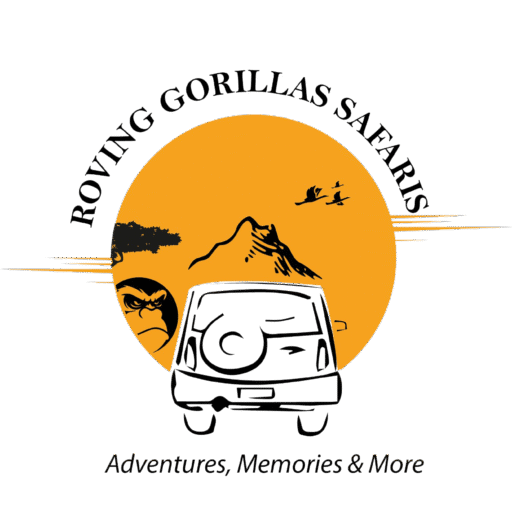Lake Mburo National park
Lake Mburo National park
Lake Mburo National Park is the smallest savannah wildlife park in Uganda located in western Uganda in a 4 hour’s drive from Kampala, the capital city of Uganda. Lake Mburo National Park is the closest national park to Uganda’s capital – Kampala, the park is also an excellent stop for long drive to the far southwestern national park.
Lake Mburo national park is a perfect destination for viewing wildlife on foot and in a vehicle, the park covers an area of 260 square kilometers and is the only protected area in western Uganda hosting zebras and is the only park in Uganda with impalas, slender mongooses and giant brush rats.
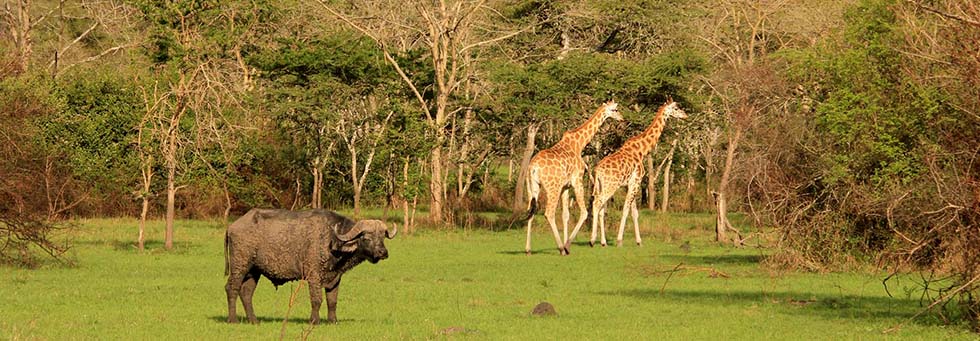
History About Lake Mburo National Park
Lake Mburo national park was initially gazetted in 1933 as a controlled hunting Area and it was later upgraded into a game reserve in the 1963, the local people – The Bahima Banyankole residents continued with grazing their own cattle within the reserve till it was up graded into a national park in 1983. The decision of up grading the park by the government of Obote put up a decision to upgrade the reserve to a park as a way of weakening the Banyankole who were supporting the anti – Obote rebels. Following the upgrade the Banyakole were evicted from the area and were not compensated for losing their grazing land and were also not helped with resettling.
The climate & Geography of Lake Mburo National Park
Lake Mburo National Park has a tropical climate and is situated in the Ankole Southern Climatic Zone, the lake lies with in the rain shadow area that is between Lake Victoria and Rwenzori Mountains. The park has two seasons including the dry and wet seasons that receive the bi-modal low rainfall that ranges between 500 and 1000mm. the rainfall also tends to be so erratic as well as unreliable that causes the low pastures which affects the wildlife behaviors including the birds and creates the demand on the park by the known local pastoralists.
The temperatures in the park also range between 23-25 degress and evapotranspiration of the areas in the northwest, north and in the north east to east that ranges from 450 to 1600mm. Also the areas in the south and in the south west of Lake Mburo National Park always experiences lower evapotranspiration that ranges between 1300 to 1450 mm.
Lake Mburo Wetland system is a huge socio-economic value and it is a source of water or the domestic usage, wildlife and livestock. This system is also a source of the pastures or the local herds in the drought period, a source of fish as well as materials off crats and the thatching.
Biodiversity in Lake Mburo National Park
Lake Mburo National Park has a stunning landscape consisting of flat grasslands, rolling hills, forests, bush thickets, rocky outcrops, Lakes and swamps with a chain of 14 lakes include Lake Mburo the biggest Lake fed by the Rwizi River and connected by several permanent and seasonal swamps.
Wildlife
Lake Mburo National Park is a home to several wildlife include a huge population of Zebras, giant bush rats, Eland, Klipspringer, sitatungas, impala, giant bush rats, topi, Bohor reedbuck, buffaloes, warthogs, bush pig and hippopotamus
The park is the best place to spot leopards in Uganda.
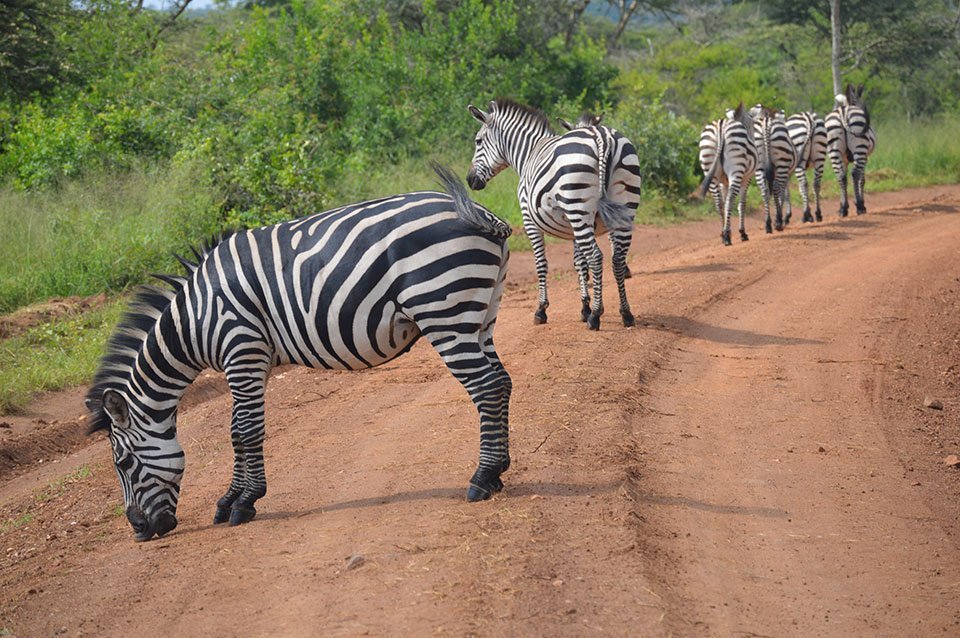
Birdlife
Lake Mburo National Park is a great birding site hosting over 350 bird species including endangered cichlid fish species, 12 species of Lake Victoria Basin Biome that occur in Uganda and is over 22 species of Palearctic as well as the afro tropical migrant birds.
Birds in Lake Mburo National Park include the elusive Shoebill stork, white – winged Warbler, Crested, Coqui, and the Red-winged Francolins, Blue-spotted Wood Dove, Brown Parrot, Barefaced Go-away bird, Harlequin and Blue Quails, Common Button Quail, White-headed and Black-billed Barbet, Greenwood Hoopoe, Common Scimitarbill, Blue-napped Mousebird, Blue-breasted and Shining-blue Kingfishers, Lilac-breasted Roller, African-grey Hornbill, the Nubian, Buff-spotted, Brown-eared, and the Grey Woodpeckers, Trilling, Stout, and Wing-snapping Cisticolas, Red-necked Spurfowl, Black-bellied Bustard, Temminck’s Courser, African-wattled Plover, Rufous napped and Flappet larks, Rufous-chested Swallow ,Yellow-throated Longclaw, Black-winged Bishop, Chubb’s, Carruther’s and a number of other Cisticolas, the Lesser and Great Swamp Warblers among others.
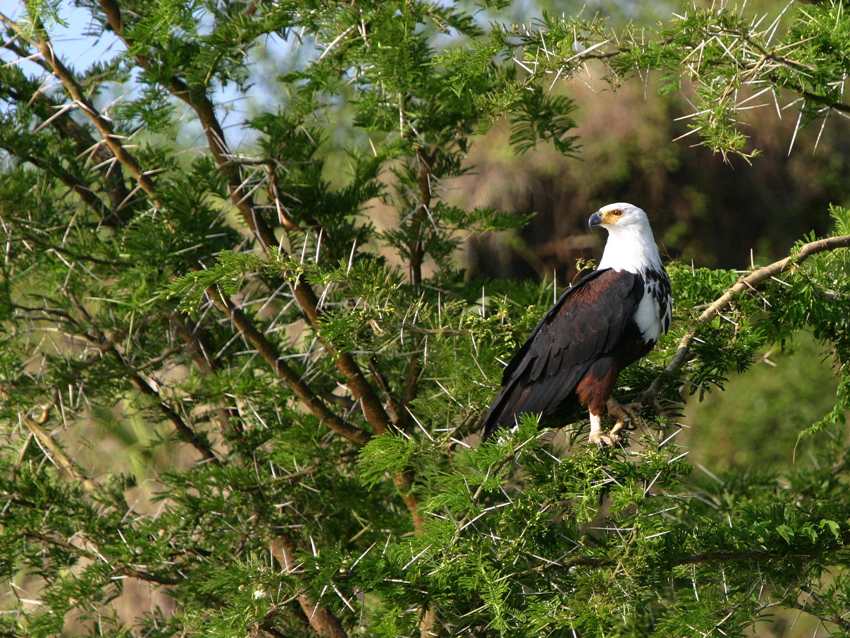
Interesting things to do in Lake Mburo National Park
Quad biking
Quad biking is one of the most exciting Uganda safari activities in Lake Mburo national park offered from the Mantana Tented Camp and is operated by All Terrain Adventures. This activity is fun and great for visitors to the back looking for a team building or family activity.
Quad biking safari experience in Lake Mburo National park take 2 hours and 4 hours, a 2 hours drive usually leaves at 09:00 to explore the Eland Tracks and a 4 hour- trip departs at 2 pm covering the Ruroko Circuit and the maximum group size is five people.
Horseback safaris
Horseback riding in Lake Mburo National Park is offered by Mihingo Lodge found East of the park, horseback safari is the best environmental friendly way to explore the park from the back of a horse.
From the back of the horse you will get a chance to get closer to animals such as zebras and enjoy the scenic views of the landscape dotted with rolling hills.
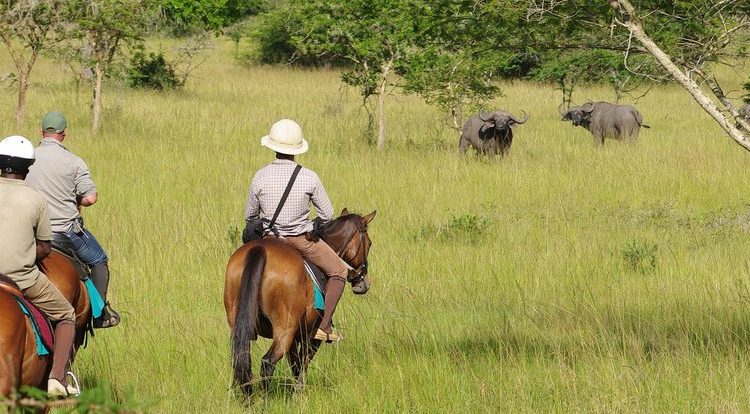
Boat rides
Boat rides on the calm waters of Lake Mburo the biggest lake in Lake Mburo National park is a great activity proving you good sights of hippos, crocodiles, buffaloes, waterbucks and bushbucks.
You will also enjoy spotting water birds including Toss’s turaco, Narina trogon, the African fish eagle, marabou stork, pied kingfisher, and various egrets and herons. Each boat carries 8 people.
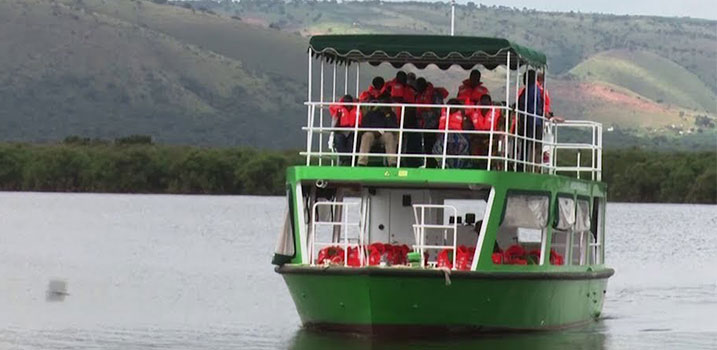
Game drives
Game drives are most fascination Uganda safari activity in Lake Mburo National park offering tourists an opportunity to explore the park from the comfort of your vehicle.
Game drives are done on tracks connecting Sanga gate and Nshara Gate to Rwonyo Rest camp and along these tracks you will spot many animals including impalas, zebras, buffaloes, leopards among others. The best tracks to do game drives in Lake Mburo national park are Lakeside Track and Kigambira Loop.
During the game drives you can branch east of the Lakeside track where the Kazuma and Ruroko routes pass through a relatively open savannah interspersed with rocky hills where you will observe pairs of Klipspringers, you can also park up and walk to the top of Kazuma Hill where there is a view over four of the lakes in he park.
Guided nature walks
Guided nature walks are one of the major safari activities to do in Lake Mburo national park, on this activity offers an opportunity to walk in the park in the company of an armed ranger guide and is conducted on trails leading to the jetty which is rich in birds and hippos.
You visit a viewing platform that overlooks a salt lick, this site is an excellent place to see a wide range of animals. Another site for guided nature walks is the Rubanga Forest which lies off the Rwizi Track perfect for birders and can only be visited with the warden’s permission.
How to get to Lake Mburo National Park
Lake Mburo national park is located in western part of Uganda and is an a drive over 228 kilometers from Kampala and a drive of 3 to 4 hours. To get to the park by road using Masaka – Mbarara route from Kampala to Sanga gate 37 kilometers East of Mbarara and Bia Nshara gate from Lyantonde and 50 kilometers to Mbarara.
By Air, there are chartered/domestic flights from Entebbe International Airport or Kajjansi airstrip to Mbarara airstrip and proceed to the park by a vehicle.
Where to stay in Lake Mburo National Park
There are few accommodation options ranging from luxury, midrange and budget. These accommodations include
- Mihingo safari Lodge
- Mantana tented camo
- Mburo safari Lodge
- Eagle’s nest lodge
- Rwonyo rest camp
- Arcadia cottages
